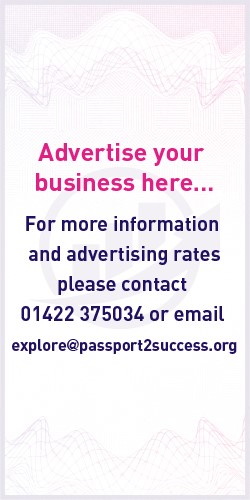In today’s podcast, we’ll be looking at email marketing metrics that will help you convert more customers and how to write a follow-up email that actually works.
The Passport 2 Success business podcast where we discuss the latest in business news, business advice and give you insights into how to move forward in your business.
Passport 2 Success is the online community and resource that gives you access to a world of business know-how. Become a member at passport2success.org
Listen on your favourite player
Like every week, just before we get started, we’re going to recommend a tool for you to use that will help you and your business. This week’s tool we recommend using as a small business is Meetup. Meetup is a great networking tool that matches with your interests so it’s great for finding local gatherings and networking events in your niche. Meetup is completely free for attendees but if you’re wanting to host an event it costs a small fee, but it’s definitely worth having a look at if you’re looking to create more leads and meet like-minded business owners. You can find the information you need at www.meetup.com.
Now onto the podcast
Now if you’re a business owner then you should be using email marketing, it’s as simple as that. it’s a great way to connect, interact and convert customers but only if you do it well. There’s a fine line between using it correctly and just been annoying. It might get to the point where people just aren’t opening your email anymore, which if that’s the case, then this podcast is for you. we’ll be looking at different email marketing metrics that will help increase the conversion rate of your customers.
- Improve email open rate
You want your email subject line to be as simple and straightforward as possible, you don’t want anything complicated or with it all fully capitalised. People just appreciate you being upfront and truthful. Of destination the subject line is incredibly important for an email, that’s what can make or break people opening it, but equally as important is the first few words in the email body.
You want to ensure that you have something that’s short, snappy and straight to the point so you automatically capture the attention of your customer rather than them scanning through and completely missing it. You have to ensure that it’s something that they can relate to or will be interested in, don’t neglect the subject line, we can’t explain any more how important it is!
- Email opens by device
Now as the years have gone by, desktop devices have gradually decreased as the number one way to open your emails, as 78% of people now open though mobiles, with only 22% through desktop. Now if you’re only formatting your emails to fit with desktops, then this is a huge mistake, you want to make them as easy to read as possible on all platforms because not only will it increase the open rate, the conversion rate will follow suit.
- What is the best time to reach your prospects
It’s easy to think that it doesn’t really matter what time you contact your prospects via email apart from the obvious time, at night. But you should have a look at your data and examine the times to see what times most people are opening your emails. This will then give you an idea of what time might work best for your business to send emails out to get the higher open rate.
For example, between 7am and 9am might be a good time because people are just waking up for work and will be flicking through their emails, but between 9am and 11am might be a poor time to send emails out as most people will be too busy concentrating on their work at hand and therefore completely disregard any emails sent to them.
Timing can be everything for emails. Send them at the wrong time can mean very few people open them, so examine the statistics you have and have a play around to find the best time for you.
Now onto our second subject which will be how you should be structuring and writing a follow-up email to increase open-rates and conversions.
In sales, it’s never an immediate yes when you’re trying to sell something to customers, in fact, 92% of salespeople give up after four no’s but 80% of prospects actually say no four times before they say yes. That’s why failing to follow-up on any emails you’ve sent out can be impacting your business conversions.
But nowadays, you can’t just be sending an email that’s a bit of a checking in email to see how they’re getting on, any follow-up email deserves as much attention as the initial outreach, so you need to up your game an avoid any of the following mistakes so you can get the most out of every follow-up email you send.
The first common mistake is that you don’t even send follow-up emails. Statistics can tell us a lot about problems within your business, and if your emails aren’t being opened or converting a lot of people, then fix it. There must be a reason why you’re not following -up?
- Do you have something in place to remind you to follow-up or to automate the follow-up process?
- Do you not book in enough time to schedule your follow-ups?
- Do you assume people are uninterested, rather than busy?
You need to find why you’re not following up and fix it, it can make a huge difference.
Maybe you’re not sending enough follow-up emails, one isn’t enough! A study saw that there was a 30% response rate to the first email and a 14% to the fourth. In total, they sent 10 emails and even the last one they sent had a 7% response rate.
You need to have a structure in place to ensure that you’re sending enough follow-up emails to ensure that you’re giving everyone the absolute best chance to respond. Some people do just completely miss emails, we’ve all done it.
There’s no point in even sending follow-up emails if they’re not good enough. The emails you send shouldn’t be cold and arms-length otherwise why would they want to respond to a business that doesn’t really care about them, all they want to do is make a sale. There are several different mistakes that people can make when creating poor follow-up emails:
- They’re too generic. You have to be memorable if you’re not then you’re just another email that they’re going to ignore. You have to be specific, relevant and compelling to your customers.
- They’re too long. You don’t need to write a lot, you just need to be simple and too the point, as we mentioned earlier, customers prefer businesses who are being upfront and honest to them. you should aim for around 3-5 sentences max.
- Your subject line isn’t compelling enough. Again we mentioned this earlier in the podcast, but your subject line for the original email and your follow-up emails should entice the customers to open, click through and convert.
- They don’t offer anything of value. Don’t repeat the same content you shared the first time, you need to mix it up a little bit since the first time they didn’t bite. This could be the perfect place to offer some content that’s of value to them.
- Don’t ask for too much straight away. You don’t propose to marry someone on your first date do you? Bit of a broad example we know but both your initial outreach and follow-up emails should be conscious of the effort required by your ask.
- And finally they don’t have a clear call to action. You need to tell your prospects what you want them to do – even if it’s as simple as clicking on a link or reading an article, you never want to leave them guessing about what they should be doing next.
If you’re struggling with a follow-up template, there are a number of different responses that can work.
The quick response template takes a lot of pressure off the prospect having to give you a lengthy reply, whilst still giving them some type of actionable information.
Some people might see this as slightly unprofessional and brisk, but if it works for your business, then don’t fix it.
Another template you can use is the new content template. You want to be helpful to your customers, not pushy. You should follow-up with an email featuring a recently-released piece of content that your company has produced that your customers will find of interest.
If your company releases a new feature, publishes a new case study or blog or has any exciting company news, then this is a great opportunity to follow up. This usually works best when you’ve had a previous conversation with the customer that defined their biggest challenges or frustrations. If you haven’t had anything like this, then you can turn it into more of a general announcement.
Next is finding a common pain point amongst your clients that they can identify with. Once you have their attention, you should be hinting at how your solution helped these clients solve their problems. The key to this template is really making sure you nail the pain points. Once you do then they’re be interested in hearing more.
Each of these templates should help you create an engaging follow-up email that really interests the customer rather than them just completely disregarding it. You have to be the judge of which one will work best for the scenario! Just make sure that your initial email and follow-up emails are relevant and interesting to them, otherwise why are they going to reply!


0 responses on "How To Convert More Emails & Write A Follow-Up That Actually Works [P2S Podcast]"